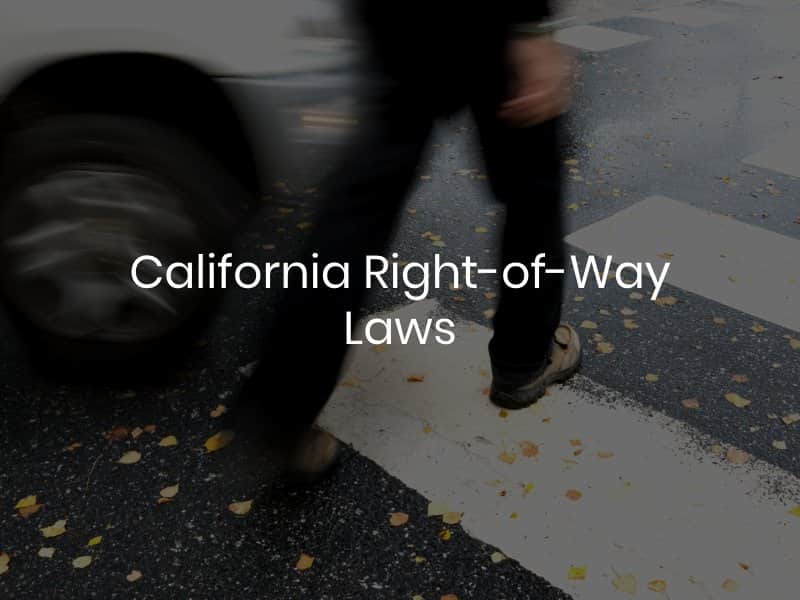California Right-of-Way Laws
California traffic laws may seem like a nuisance to many people, but the reality is that they save lives. Vehicles weigh thousands of pounds, and they can inflict significant damage in the event an accident occurs. Right-of-way laws are incredibly important for all drivers to understand because they provide clear guidance regarding when a driver is allowed to go and when they should yield to others on the roadway. This includes other vehicles, motorcycles, pedestrians, and bicyclists. The number one goal of right-of-way laws is to prevent a car accident in California.

Pedestrians and the Right-of-Way
Motorists are required to yield the right-of-way to pedestrians. This includes those on foot, on skateboards, or in wheelchairs. Drivers should operate carefully in areas where they expect pedestrians to be and should stop for all pedestrians who are in or entering a crosswalk. Drivers must also yield to pedestrians who are not properly crossing any crosswalk, even if that pedestrian is jaywalking illegally. If you or a loved on were injured as a pedestrian accident, speak with our pedestrian accident lawyer to explore your legal rights.
Crosswalks and the Right-of-Way
Drivers are required to allow five feet between their vehicle and the crosswalk so that pedestrians can cross safely. No driver should ever stop inside of a crosswalk because this will block the pedestrians’ legal pathway to cross. Drivers must never pass a vehicle that is stopped at a crosswalk.
The Right-of-Way at an Intersection
If two vehicles reach an intersection at the same time, then the vehicle on the right has the right-of-way and will be allowed to go first. However, there are some exceptions to this:
Three-way Intersection Right-of-Way
If a driver approach is a three-way intersection where one roadway ends at another creating a “T” shape, the motorists traveling on the road with the stop sign must remain stopped until all other vehicles have passed through the intersection. If there is no stop sign present, then vehicles on the “through” road have the right-of-way, just as if there was a stop sign present.
Traffic Signal or Sign Right-of-Way
If an intersection has traffic signals or signs that indicate who has the right-of-way, these signs must be obeyed.
- Yield sign. Any vehicle approaching a yield sign must slow down and use caution, as vehicles traveling on the intersecting road will have the right-of-way.
- Stop sign. When an intersection is controlled by a stop sign, all vehicles must come to a complete stop before proceeding. If two or more vehicles approach a four-way stop at the same time, the vehicle on the right has the right-of-way after stopping.
- Flashing red light. This will be treated the same way as a stop sign.
- Traffic signals not working. This will be treated as if the intersection was controlled by stop signs.
Making Left-Hand Turns
If a motorist is at an intersection and needs to make a left-hand turn, they should wait for a light to turn green before doing so. If there is no left turn arrow light, drivers need to yield the right-of-way to oncoming traffic before making their turn.
Roundabout Right-of-Way
Roundabouts are special intersections where vehicle traffic moves in a counterclockwise direction. Vehicles that are entering a roundabout are required to yield to motorists who are already inside the roundabout. When a vehicle is inside the roundabout, they should not stop to allow other motorists to enter. When exiting a roundabout, motorists should only yield to pedestrians and bicyclists.